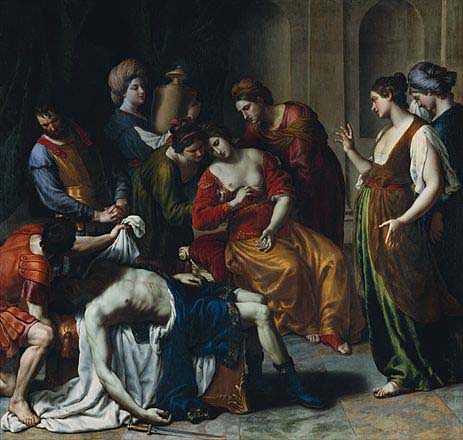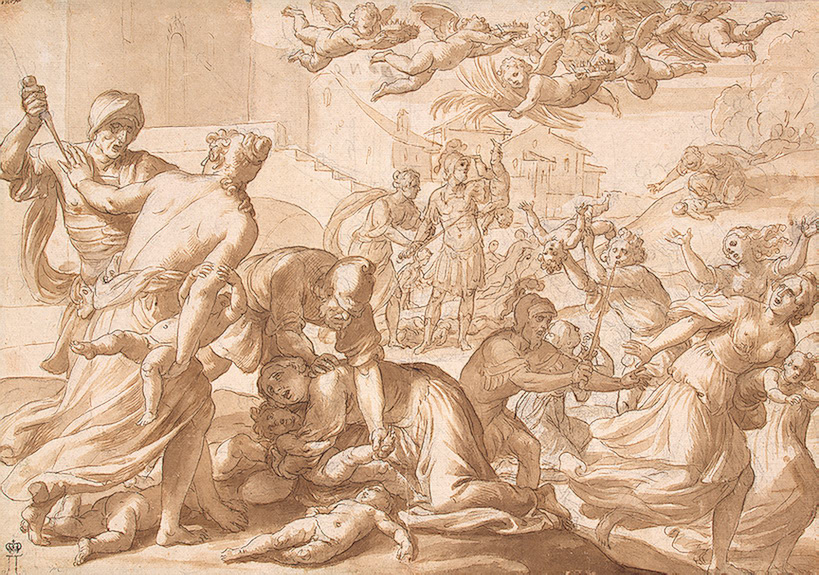Alessandro Turchi (1578 – 1649)
Get a Alessandro Turchi (1578 – 1649) Certificate of Authenticity for your painting (COA) for your Alessandro Turchi (1578 – 1649) drawing.
For all your Alessandro Turchi (1578 – 1649) artworks you need a Certificate of Authenticity (COA) in order to sell, to insure or to donate for a tax deduction.
Getting a Alessandro Turchi (1578 – 1649) Certificate of Authenticity (COA) is easy. Just send us photos and dimensions and tell us what you know about the origin or history of your Alessandro Turchi (1578 – 1649) painting or drawing.
If you want to sell your Alessandro Turchi (1578 – 1649) painting or drawing use our selling services. We offer Alessandro Turchi (1578 – 1649) selling help, selling advice, private treaty sales and full brokerage.
We have been authenticating Alessandro Turchi (1578 – 1649) and issuing certificates of authenticity since 2002. We are recognized Alessandro Turchi (1578 – 1649) experts and Alessandro Turchi (1578 – 1649) certified appraisers. We issue COAs and appraisals for all Alessandro Turchi (1578 – 1649) artworks.
Our Alessandro Turchi (1578 – 1649) paintings and drawings authentications are accepted and respected worldwide.
Each COA is backed by in-depth research and analysis authentication reports.
The Alessandro Turchi (1578 – 1649) certificates of authenticity we issue are based on solid, reliable and fully referenced art investigations, authentication research, analytical work and forensic studies.
We are available to examine your Alessandro Turchi (1578 – 1649) painting or drawing anywhere in the world.
You will generally receive your certificates of authenticity and authentication report within two weeks. Some complicated cases with difficult to research Alessandro Turchi (1578 – 1649) paintings or drawings take longer.
Our clients include Alessandro Turchi (1578 – 1649) collectors, investors, tax authorities, insurance adjusters, appraisers, valuers, auctioneers, Federal agencies and many law firms.
We perform Alessandro Turchi art authentication, appraisal, certificates of authenticity (COA), analysis, research, scientific tests, full art authentications. We will help you sell your Alessandro Turchi or we will sell it for you.

Alessandro Turchi was a Italian painter of the early Baroque, born and active mainly in Verona, and moving late in life to Rome. He also went by the name Alessandro Veronese. Turchi initially trained with Felice Riccio (il Brusasorci) in Verona. By 1603, he is already working as independent painter in Verona. In 1606-1609, Turchi paints the organ shutters for the Filarmonica Academy of Verona. When Brusasorci dies in 1605, Turchi and his fellow Paschal Ottino (or Pasquale) complete a series of their deceased master’s canvases. In 1610, he completes an Assumption altarpiece for the church of Saint Luca of Verona.

In 1612, the Veronese Guild of the Goldsmiths commissions an altarpiece, today lost, of the Madonna and Saints. By 1616, Turchi travels to Rome participating in the fresco decoration (Gathering of Manna) of the Sala Regia of the Quirinal Palace, and painting a Christ, Magdalen, and angels for cardinal Scipione Borghese. In 1619, he sends an altarpiece of the 40 martyrs for the Chapel of the Innocents in Santo Stefano of Verona, to hang next to paintings by Pasquale Ottino and Marcantonio Bassetti. For the Count Giangiacomo Giusti, in 1620 he paints an Allegory of Fame between Mercury and Pallas Athena and three canvases of Faith, Hope, and Charity. In 1621 executes for French cardinal François de Sourdis the Resurrection of Christ, now in the cathedral of Sant’Andrea of Bordeaux, and sends the Adoration of the Magi for the Gherardini family in Verona. By 1621, he had completed a painting of San Carlo Borromeo and the Madonna in Glory for San Salvatore in Lauro in Rome. Documents from 1629, indicate Turchi was payed 110 scudi for painting St. Anthony of Padua for the Farnese Palace at Caprarola. In 1632, an inventory of the Palazzo Mattei di Giove, records a Saint Marta and Maria Madalena and a Samaritan Women by Turchi.

His sister married Giacinto Gimignani. In 1623, Turchi married Lucia San Giuliano. In 1637, with the sponsoship of the cardinal Francesco Barberini, he became Principe or director of the Accademia di San Luca. In 1638, he joined the Pontifical Accademia dei Virtuosi of the Pantheon.

Reviews
1,217 global ratings
5 Star
4 Star
3 Star
2 Star
1 Star
Your evaluation is very important to us. Thank you.
